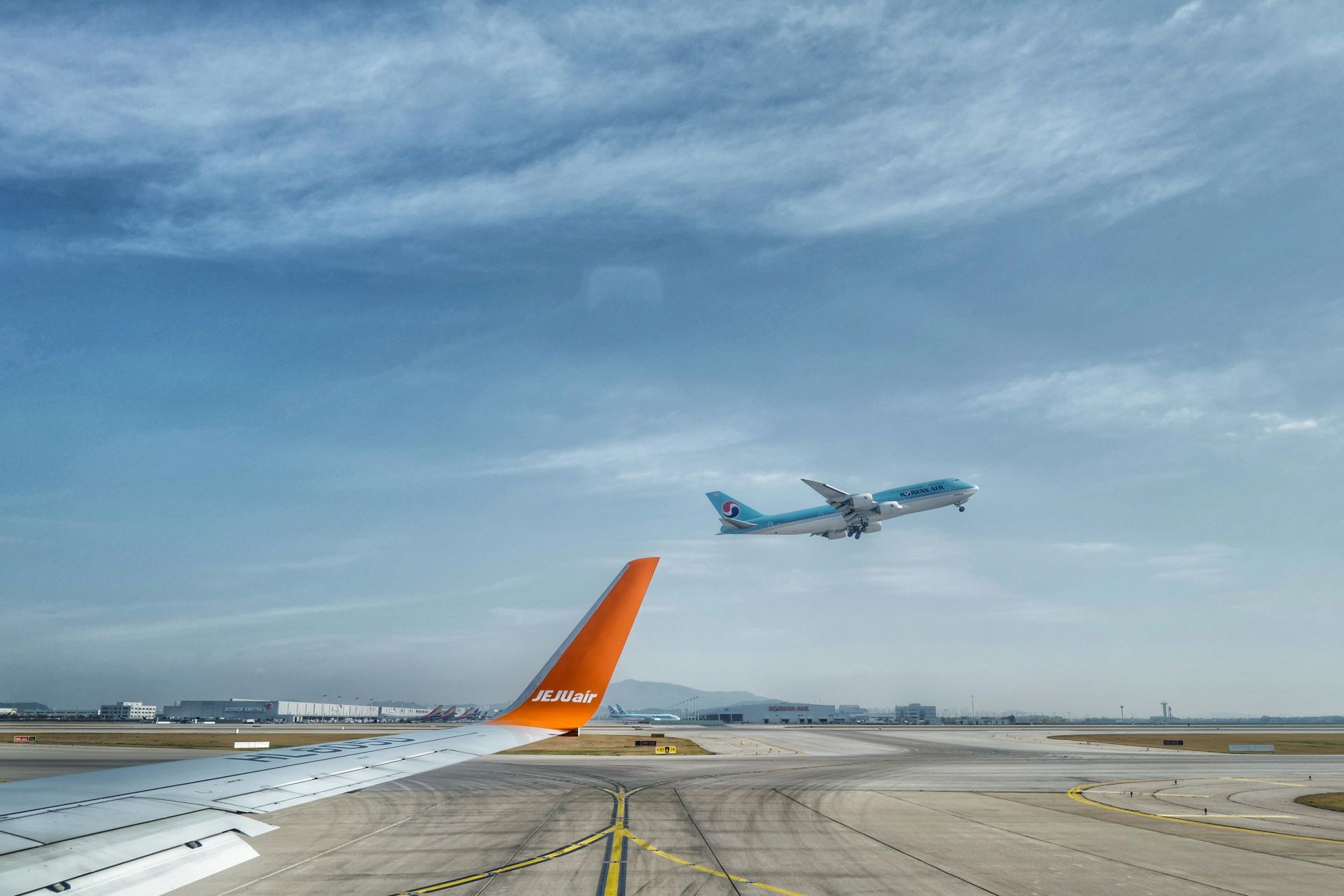Airlines are not merely conduits for passengers—they are vital engines of regional economic development. Every flight path carved across the skies carries the potential to invigorate local economies, stimulate tourism, and create new opportunities for small businesses in previously isolated or underdeveloped regions. The expansion of airline routes is more than an operational decision; it is a strategic catalyst that transforms communities, fosters connectivity, and reshapes the landscape of regional tourism.
Expanding Horizons: Tourism as a Driver of Regional Growth
Tourism is the most immediate beneficiary of route expansion. When a new connection is established, destinations previously difficult to access suddenly become viable options for both domestic and international travellers. This newfound accessibility often translates directly into increased visitor numbers, longer stays, and higher local spending, which collectively bolster the regional economy. Small towns, remote inland settlements, and coastal enclaves alike reap the benefits, as travellers venture beyond the traditional tourist circuits to explore uncharted cultural and natural landscapes.
Accessibility fosters discovery. A direct flight to a lesser-known town can turn it into a destination of interest for travellers seeking authentic experiences. For instance, cultural festivals, historic architecture, or unique culinary offerings that were once overshadowed by major city attractions gain visibility when regional air connectivity improves. As more visitors arrive, the demand for accommodation, dining, and recreational activities grows, triggering a ripple effect that sustains local businesses and encourages investment in tourism infrastructure.
Seasonality is another crucial factor. Many destinations experience peaks and troughs in visitor traffic that make economic planning challenging. The introduction of regular airline services can mitigate this problem by creating opportunities for year-round travel. For example, regions that previously relied on summer tourism can attract winter travellers through special promotions or targeted marketing campaigns, providing more stable revenue streams for hotels, restaurants, and tour operators. This effect not only stabilises incomes for local service providers but also creates more consistent employment opportunities, which is vital for regional communities.

Empowering Small Businesses: The Airline-Tourism Symbiosis
Small enterprises form the backbone of regional economies, and their fortunes are often closely linked to airline connectivity. When a town gains new flights, local restaurants, boutique hotels, craft shops, and tour operators frequently experience an immediate uptick in demand. More than just numbers, this demand drives innovation: entrepreneurs develop specialised packages, improve service standards, and diversify offerings to cater to the influx of visitors. The connection between aviation and local business vitality is especially pronounced in regions where tourism was previously constrained by logistical challenges.
The economic symbiosis extends beyond tourism-specific businesses. Suppliers, artisans, and transport providers also benefit from increased activity. Local farms may expand production to supply a growing hospitality sector, while small-scale manufacturers and retailers gain new customers as tourism-related demand grows. The effect is a broader circulation of wealth within the community rather than capital being siphoned to distant urban centers. This local multiplier effect underscores the transformative power of aviation, showing that a single flight can indirectly support a network of enterprises that collectively shape regional prosperity.
Airports themselves frequently act as hubs of commercial activity. Retail outlets, cafes, shuttle services, and freight operations benefit from increased passenger volumes, creating jobs and entrepreneurial opportunities. For regional towns, the airport often becomes a focal point of economic activity, symbolising both connectivity and opportunity.
Bridging Remoteness: Aviation as a Connector of Communities
One of the most profound impacts of airline expansion is its ability to connect remote or underserved regions to broader economic and social networks. Geographic isolation—whether due to mountainous terrain, vast distances, or limited road infrastructure—has long constrained tourism and investment. By opening direct flights, airlines effectively shrink these distances, transforming remoteness into accessibility.
Consider coastal regions with limited road access. Before direct flights, reaching these areas might have required multiple transfers, long drives, or overnight stops, discouraging potential visitors. A new flight removes these barriers, enabling spontaneous travel and higher visitor turnover. Similarly, inland destinations rich in cultural heritage or natural attractions, but previously difficult to reach, suddenly become viable candidates for domestic and international tourism. The resulting economic boost can be transformative, providing both financial stability and a platform for sustainable development.
The social implications are equally significant. Air connectivity facilitates not only tourism but also educational, professional, and healthcare exchanges. Local populations gain easier access to higher education opportunities, specialised medical care, and professional networks in larger cities. Businesses can attract talent, investors can evaluate opportunities, and communities can participate more fully in national and global economic activity. In effect, aviation bridges not only physical distances but also socio-economic gaps, enabling inclusion and mobility that were previously limited by geography.
Strategic Airline Planning: Aligning Routes with Regional Opportunity
Airline route expansion is not a random exercise. Decisions about which destinations to serve are grounded in careful market analysis, passenger demand forecasts, and economic considerations. By strategically selecting routes that align with regional tourism potential, airlines can generate maximum benefit for both the carrier and the communities they serve.
Secondary cities or underserved markets are often the focus of deliberate airline strategies. These decisions are informed by collaborations with local authorities, tourism boards, and chambers of commerce, ensuring that new routes foster mutual economic gain. Marketing campaigns often accompany route launches, highlighting attractions, festivals, and cultural experiences to draw potential visitors. By combining operational planning with local engagement, airlines create a symbiotic relationship where regional development and airline growth are mutually reinforcing.
Moreover, airlines frequently adopt innovative approaches to stimulate demand. Seasonal flights, promotional fares, and partnerships with local businesses or travel agencies can accelerate passenger uptake. The strategy extends beyond the airport gates; by linking destinations with compelling reasons to visit, airlines encourage longer stays, repeat visits, and higher overall spending—factors critical to sustained economic impact.

Case Studies: Aviation Transforming Regional Economies
Across the globe, evidence of the economic impact of airline connectivity is compelling. In South Africa, the introduction of direct flights to regional airports such as George and Bloemfontein significantly boosted local tourism. Hotels reported higher occupancy rates, restaurants experienced increased patronage, and cultural attractions saw greater engagement. Local entrepreneurs responded by expanding services, offering guided tours, and creating experiences tailored to new visitor demographics.
In Europe, secondary airports such as Porto in Portugal and Asturias in Spain have seen similar transformations. The arrival of new low-cost carrier routes stimulated tourism growth, encouraged investment in accommodation and leisure facilities, and generated employment opportunities across multiple sectors. Notably, these gains often extended beyond traditional tourism industries, benefiting local agriculture, artisanal crafts, and transportation services. The effects ripple outward, reinforcing the principle that aviation is a strategic economic lever.
Emerging markets provide further evidence. In Southeast Asia, regional airports serving cultural and natural tourism hubs have witnessed rapid growth following airline expansion. Small-scale tourism enterprises, from homestays to eco-tour operators, leveraged new accessibility to attract international visitors. Communities that were previously overlooked became destinations in their own right, diversifying regional economies and fostering sustainable growth models rooted in local identity.
Challenges and Sustainability Considerations
While the benefits of route expansion are evident, they are not automatic or guaranteed. Infrastructure readiness, environmental concerns, and fluctuating demand all play critical roles in determining outcomes. Airports must be equipped to handle increased traffic, communities must manage cultural and environmental preservation, and airlines must ensure operational profitability. Failure to address any of these factors can limit the potential economic benefits or create unintended negative consequences.
Environmental sustainability is a growing concern. Increased flights can contribute to carbon emissions and noise pollution, requiring mitigation strategies such as fuel-efficient aircraft, sustainable aviation fuels, or flight scheduling that balances demand with environmental responsibility. Additionally, local communities must carefully manage tourist influxes to prevent degradation of cultural sites, natural landscapes, and local quality of life. Here, cooperation between airlines, local governments, and community stakeholders is essential to create growth that is economically beneficial, socially responsible, and environmentally sustainable.
Seasonality and market volatility also present challenges. Airlines must carefully forecast passenger demand, and regional businesses must adapt to fluctuations. Strategic marketing, flexible service offerings, and diversified economic planning can help manage these risks, ensuring that route expansion delivers lasting benefits rather than short-term spikes in activity.
The Future of Aviation-Driven Regional Development
Looking ahead, the role of aviation in regional economic development is poised to expand further. Technological advances, including more fuel-efficient aircraft and sustainable aviation solutions, will make previously unviable routes economically feasible. The growing demand for authentic, off-the-beaten-path experiences positions smaller destinations as attractive tourism options. Airlines, in turn, are likely to play an increasingly strategic role, integrating route planning with regional economic strategies to optimise growth outcomes.
Collaboration will be key. Regional governments, tourism boards, and small business networks must work closely with airlines to develop infrastructure, curate visitor experiences, and ensure that tourism growth benefits the local population. Strategic partnerships can unlock investment, support community initiatives, and create environments where tourism-driven revenue is reinvested in regional development.
Moreover, as digital connectivity and data-driven analytics improve, airlines can refine route planning with greater precision. Market research, traveller behaviour insights, and predictive modelling will enable carriers to identify underserved regions with high economic potential, designing services that maximize both profitability and regional impact. This level of sophistication ensures that aviation continues to function as a deliberate, measurable driver of economic transformation.

Aviation as an Engine of Regional Prosperity
The story of aviation is inseparable from the story of regional development. Each flight route is more than a line on a map; it is a conduit for opportunity, connecting communities to broader economic, social, and cultural networks. Airline route expansion stimulates tourism, supports small businesses, and bridges remote destinations to national and international markets. It catalyses entrepreneurship, fosters infrastructure investment, and contributes to sustained economic growth.
In an era where connectivity defines opportunity, airlines hold the power to transform not just travel patterns but entire regions. By understanding the intricate relationship between aviation and local economies, stakeholders—from policymakers to entrepreneurs—can leverage new routes to create enduring prosperity. Whether in a small coastal town, a historic inland settlement, or a mountainous enclave, the arrival of a direct flight heralds more than passengers—it heralds progress.
